The last time I saw White Sands was more than two decades ago, when it was still a national monument. My younger brother and I spent several of our summers living in New Mexico with our mom. One of the highlights was some of the road trips we took to all different parts of the state.
White Sands, circa 1997.
For a while in the late ’90s, our mom was living in Carlsbad. We ventured to places like White Sands National Monument and Carlsbad Caverns. My mom remembers the timing because it was the year the unusually bright Hale-Bopp Comet passed near the earth; it was visible to the naked eye for some 18 months and we got to witness it from the desert.
White Sands was among the more memorable road trip destinations. We filled our sneakers trudging through the grains of white gypsum. Then we turned our attention to sliding down the dunes or burying each other in the sand. It is such a visually stunning place, it naturally left a distinct imprint on our memories.

White Sands, 24 years later.
When planning a road trip to Saguaro National Park, I booked a few days’ stay at a wonderful little casita in Las Cruces so I could revisit White Sands with fresh eyes after all these years. I wanted to see if the White Sands of 2021 was anything like what I remember from my childhood. Plus, White Sands is one of the few national parks where dogs are allowed off of the paved road, so it was perfect for bringing Poppy along.

White Sands is visually so simple and elegant that I was aching to photograph it with my new camera body (an incredible Canon EOS R5 Mirrorless full-frame). I have been studying and practicing a little bit every day this year to elevate my landscape photography abilities and justify my new camera purchase – and of course, I wanted to capture unforgettable photos of my dog’s first road trip.
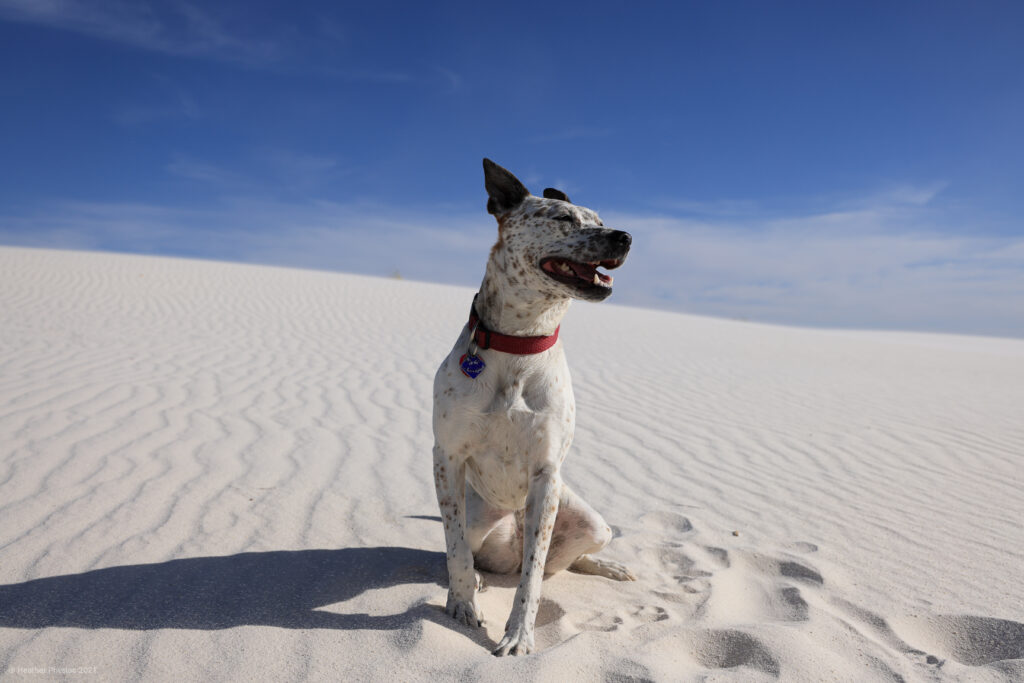
This former national monument, now elevated to National Park status, is comprised of more than 145,000 acres of a massive field of white gypsum crystal sand dunes in the Tularosa Basin. The park is home to a complex environment of uniquely adapted wildlife and plant life – like the iconic soaptree yucca and desert grasses that dot the landscape. I love the simplicity and elegance of the image below.
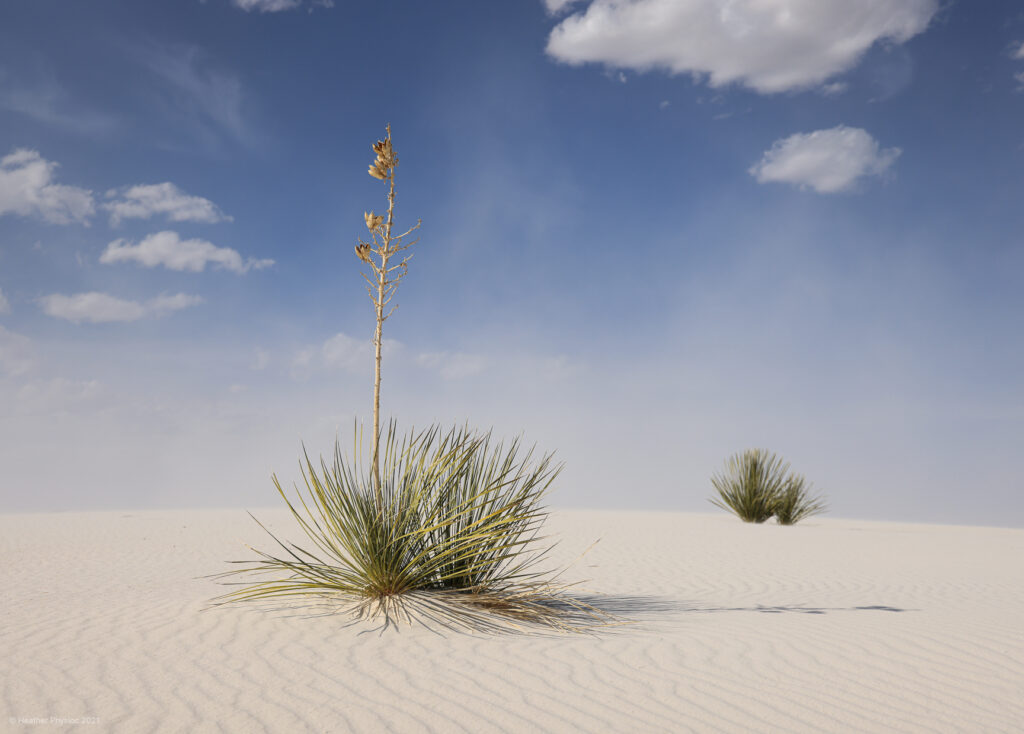
You could experience phenomena ranging from desert wildflower blooms starting around mid-April, or the rainy monsoon season as summer turns into fall. You can also experience the windy spring season spinning up sand storms. I captured this image of wind-blown sand rising in front of the Sacramento Mountains not long before it overtook the park and all the little grains felt like tiny shards of glass on my skin.
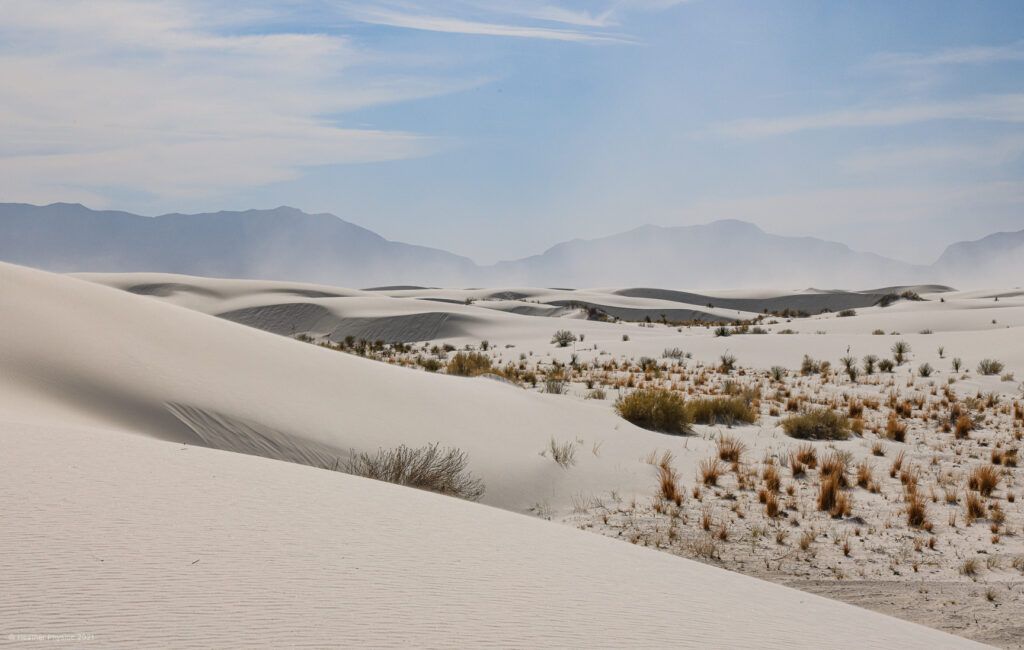
There are a number of short trails you can take around the park. Poppy and I wandered on the Dune Life Nature Trail until the wind became too much. It ended up being the perfect place to make this image of a wind-toppled shrub, almost appearing to hold on for dear life alone on the dune.

One of the most interesting and appealing parts of White Sands to me is how the shadows move throughout the day and transform the landscape. I love how shadows cast in the late afternoon create immense depth in a scene that could otherwise appear like plain white nothing.
This little hill shielded me from the wind long enough to capture a more abstract image of this beautiful, silky smooth curve of a dune. I love the line of light along the top, and the grains of sand blowing over the edge of the hill, smoothing out any blemishes from the day.
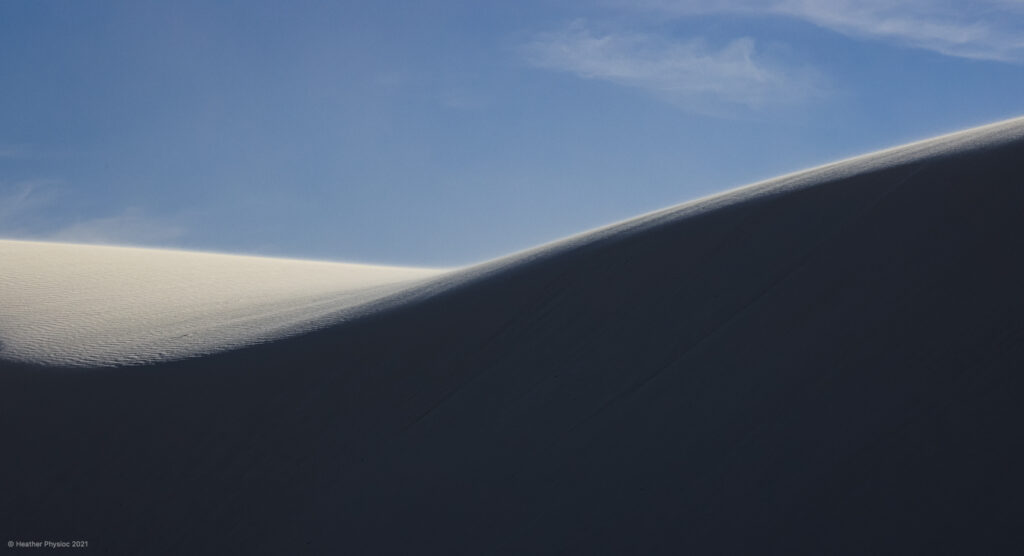
In this case, the depth of the narrow ridges of gypsum sand on the dunes cross nearly perpendicular to the long shadows of the grasses on the hill in the afternoon. The perspective of the slope disappearing into the distance, the steep and precarious placement of the clumps of grasses, the stark contrast – it’s the perfect subject for black-and-white.
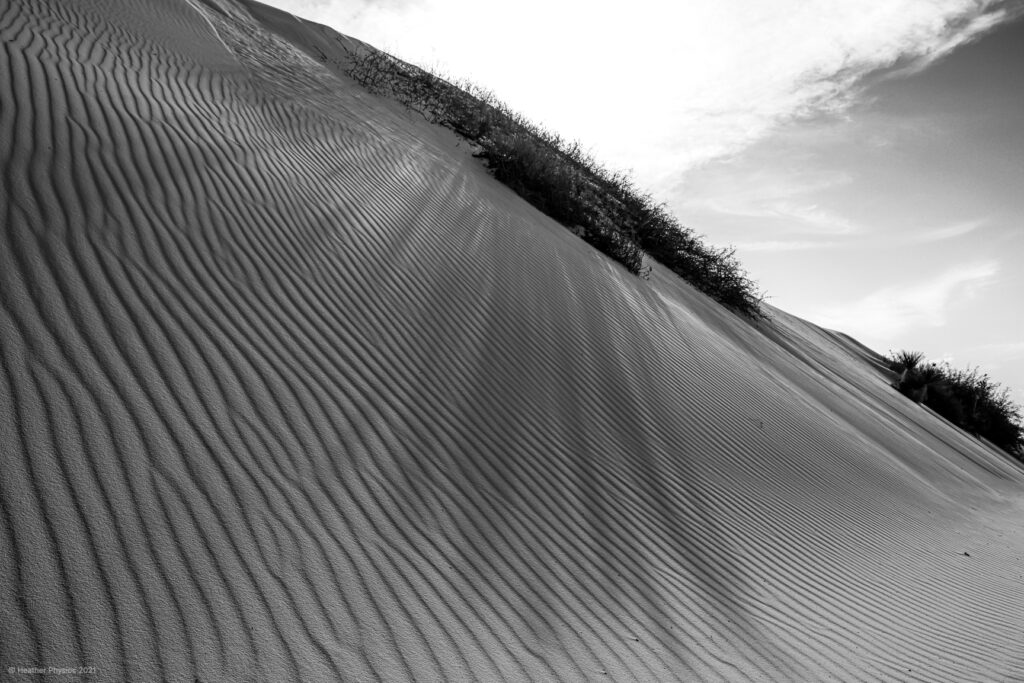
After many hours going back and forth through White Sands National Park seeking photo inspiration, I had had enough gypsum exfoliation for one day and it was time to depart. I had my eyes set on a few mile markers to get golden hour photos of the Organ Mountains anyhow.
A final thought – don’t take the journey for granted.
I will leave you with one last image from the drive back to our Las Cruces casita from the park. I captured this image as the sun was dipping behind the Organ Mountains on a twisty little back road off the highway. I truly love this photo – the subject, balance, light, color, shape, lines, and texture all come together so sweetly for me.
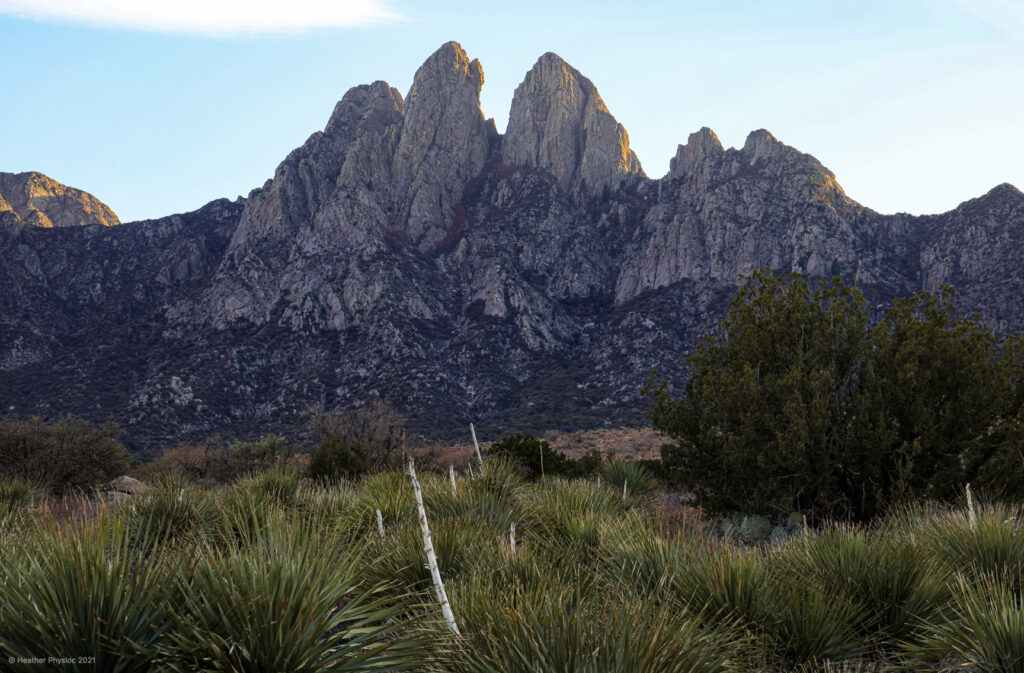
I was excited to capture this image meandering along back roads, especially after being inspired by a quote I read from former National Geographic photographer Bruce Dale: “I set out with certain goals in mind, but they are not what I’m really looking for. Some of my favorite pictures I made on the way to the places everyone goes.”
May we all wander a little the path and not take for granted the journey on the way to the destination.
